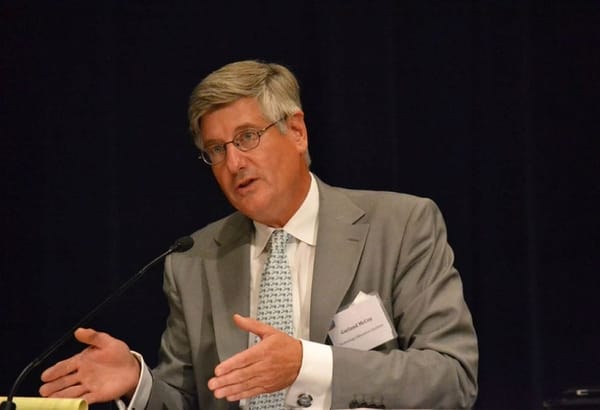Advancing Full Fiber Investment in Europe: Financing the Path to Universal Connectivity
It is essential to reinforce fiber as strategic infrastructure.
Vincent Garnier

Europe's digital transformation relies heavily on the widespread deployment of full
fiber networks. As a cornerstone of the continent’s Digital Decade strategy, fiber-to-the-home infrastructure underpins not only high-speed connectivity but also economic competitiveness, sustainability, and digital autonomy.
While substantial progress has already been made, recent market dynamics
underscore the importance of carefully calibrated investment strategies to complete this transformation. As detailed in the FTTH Council Europe’s latest assets and investment tracker, the path to universal FTTH coverage demands renewed coordination between private and public actors.
Private investment: Progress and remaining challenges
To reach the current 75% coverage rate, European operators have invested close to
€120 billion in FTTH deployment, with 57% of this capital originating from alternative operators—primarily funded through private financing. This reflects the growing recognition of fiber networks as a resilient, long-term infrastructure asset class.
Nevertheless, significant gaps remain. To reach 90% coverage, a further €120 billion in investment will be required, while extending to 99% necessitates a further €50 billion. The primary challenge lies in rural and remote regions, where deployment costs per household can be two to four times higher than in urban areas.
Evolving market dynamics: A more cautious investment climate
Following an unprecedented peak in 2022, the European fiber financing market has entered a more restrained phase. According to the FTTH Council Europe’s Investment Tracker, market activity has stabilised, though with a more cautious tone emerging for 2025 due to macroeconomic uncertainty and higher interest rates. Investors and lenders are increasingly focused on homes activated, rather than simply homes passed, placing greater emphasis on realising cash flow potential. This shift reflects a broader rebalancing of risk and return across infrastructure sectors.
The role of public funding: Targeted and strategic
While private capital will remain the primary driver of FTTH deployment, public
investment is essential in areas where the commercial case is lacking. Public
support should be targeted to complement private initiatives, preserving the
competitive dynamics that have fostered innovation and efficiency.
Policy instruments must also focus on accelerating the transition from legacy copper networks to full fiber infrastructure. Coordinated copper switch-off strategies are critical in improving network efficiency and reinforcing the investment case for fiber.
The FTTH Council Europe highlights the Copper Switch-Off as a core policy priority, with a recent study examining the progress of copper deactivation across the EU27 and UK, underscoring the importance of this transition in supporting Europe’s digital transformation. This study will serve as a key resource for policymakers, regulators, operators, and investors navigating the shift from copper to fiber, helping to accelerate the adoption of FTTH networks.
Strengthening the investment environment
To ensure the successful continuation of fiber rollout across Europe, policymakers and stakeholders must align on a set of shared priorities. First, it is essential to reinforce fiber as strategic infrastructure, recognising FTTH as a national priority deserving of regulatory clarity and consistent long-term policy support. This would create a stable environment for investment and foster confidence in the sector’s future.
In addition, simplifying deployment processes should be a priority. Harmonising and expediting permitting procedures across Member States, alongside enforcing infrastructure sharing obligations, can significantly reduce bottlenecks and speed up the construction of fiber networks.
Finally, supporting investor confidence through transparency is crucial. Initiatives
such as the Investment Tracker play an important role in guiding decision-making, helping to inform and de-risk investments by providing valuable insights into market trends and financing transactions.
By focusing on these priorities, Europe can foster an investment-friendly environment that enables the rapid and efficient deployment of FTTH infrastructure across the continent.
FTTH as a green asset: Accelerating Europe’s twin transitions
FTTH is increasingly recognised not only as essential digital infrastructure but also
as a green asset. A recent study by Cartesian, commissioned by the FTTH Council Europe, confirms fiber’s energy efficiency throughout its lifecycle—from production to operation.
Fiber consumes significantly less energy per bit than copper or mobile technologies, helping reduce emissions and support Europe’s climate goals. The study also highlights how recognising FTTH within green investment frameworks could unlock the financing needed to reach Digital Decade targets.
By raising awareness of fiber’s sustainability benefits, we aim to strengthen investor confidence and support policy decisions that align digital and environmental priorities.
A digital Europe enabled by full fiber
The FTTH Council Europe remains confident in the ability of the market to meet
future rollout goals, particularly when supported by sound policy and active demand-side measures. Fiber networks are not only essential for digital inclusion and economic growth, but they are also among the most energy-efficient communications technologies available, contributing meaningfully to Europe’s climate goals.
Vincent Garnier is the Director General of the FTTH Council Europe since July 2020. In this executive capacity, Vincent manages and shapes the FTTH Council’s agenda and ensures the continuous implementation of its mission to advance ubiquitous full fiber-based connectivity to the whole of Europe. This Expert Opinion is exclusive to Broadband Breakfast.
Broadband Breakfast accepts commentary from informed observers of the broadband scene. Please send pieces to [email protected]. The views reflected in Expert Opinion pieces do not necessarily reflect the views of Broadband Breakfast and Breakfast Media LLC.










